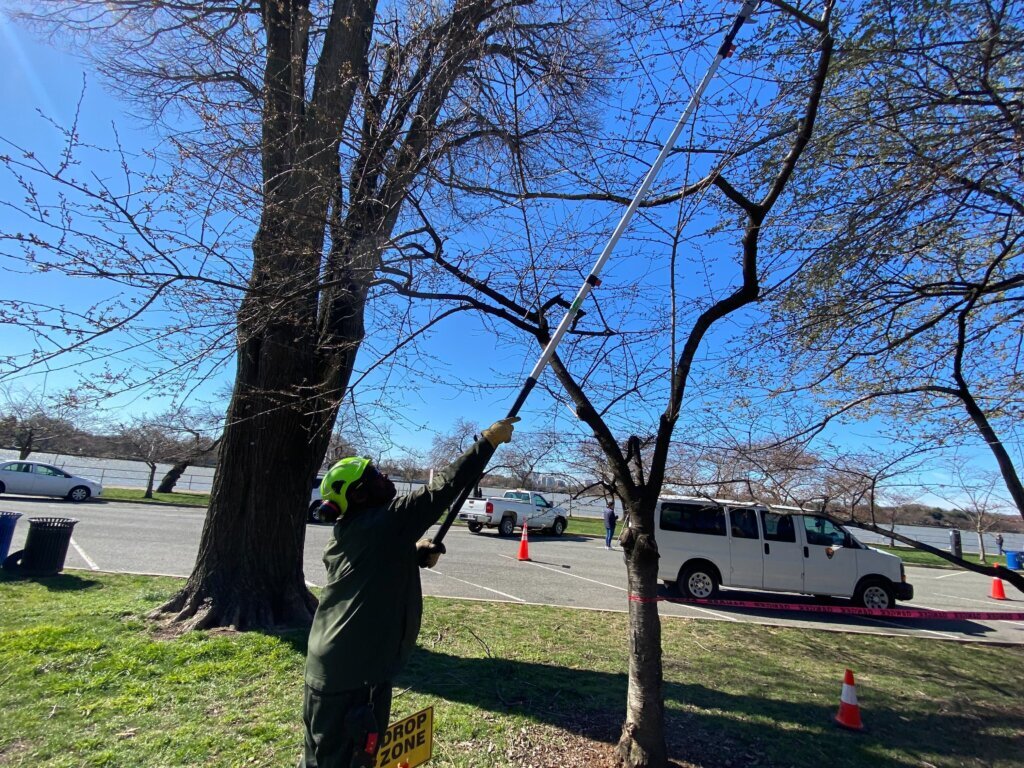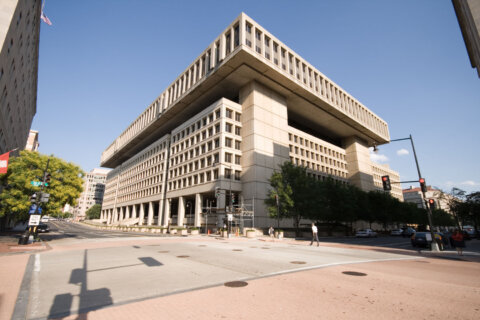You’re not supposed to even touch D.C.’s cherry trees around the Tidal Basin. However, there are three guys who walk around them with saws, reaching up and spotting every dying limb and nub, getting rid of them before you even notice a naked branch when peak bloom hits.
This video is no longer available.
Alonzo McBryde and Bob Roush are two of those guys, arriving at work so early that most days, it’s way before the sun even rises over the Jefferson Memorial.
They look at each and every one of the 3,700 or so trees around the Tidal Basin three times, starting in the winter and leading up to peak bloom.
First, they cut away all the bigger, easily noticeable dying branches. Next time around, they seek out what was a little less obvious. Then finally they wrap up with branches that almost blend right in … to the untrained eye, that is.
“Try to make them look good for the people,” McBryde said. “Just cut the dead stuff off to keep the tree alive.”
Their work happens in the coldest months of the year.
“Even today, it should be warm. But it’s cold, and the wind is blowing,” Roush said. “It gets cold out here.”

All the tree branches they’re cutting down don’t go to waste. Instead, in recent years you may have noticed more and more wood chips being spread out on the grasses around the Tidal Basin.
The older, dead trees are turned into mulch to help the other trees survive harsher conditions historically seen in the area.
“The soils around here are so depleted; they’re sun baked. We have longer summers now, we have shorter winters, shorter tree dormancy,” said Matthew Morrison, who is the National Mall’s arborist. “The soils, with all the pounding feet, millions of visitors a year, over 100 years, the soils are compacted.”
Rising waters from around the Tidal Basin don’t help either. But the new wood chips are making a difference.
“They go down and they insulate the soil from extreme temperatures, both hot and cold. They add macro and micronutrients to the soil as biodegradation occurs,” Morrison said. “The wood chips really amend the soil. They allow the trees to finally be free of the parasitic effect of humans.”
The National Park Service started doing that about two years ago, and he said it’s already having an impact.
“We see the difference,” Morrison said, most particularly in the distance between buds on branches from last year to this year. “Not only is that going to help these trees stabilize and carry them into the future, as these reach their mortality spiral and they die, when we plant, when we replace them with new trees … those trees in this new soil will have an opportunity to grow like their parents and grandparents never had.”








